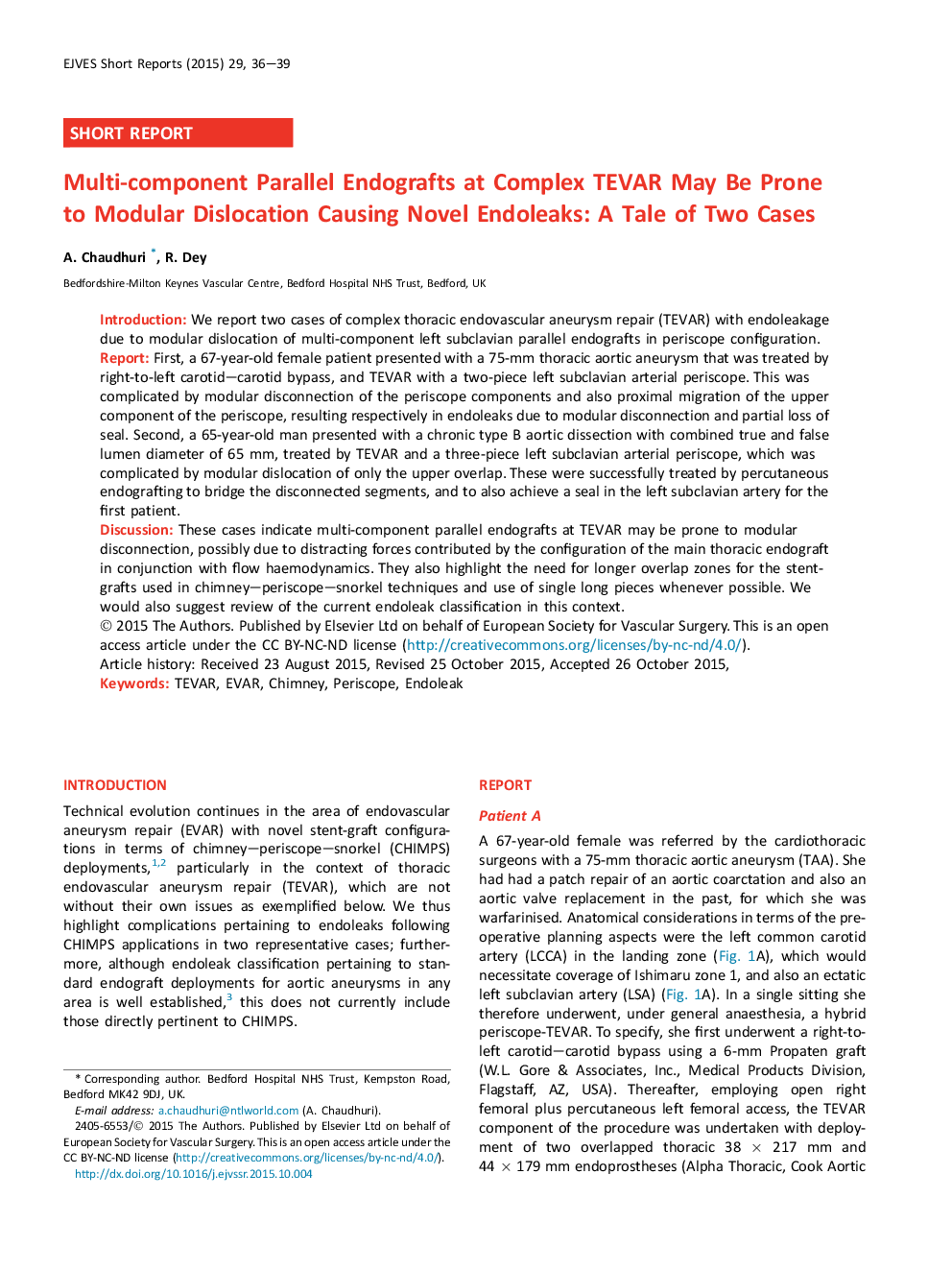| Article ID | Journal | Published Year | Pages | File Type |
|---|---|---|---|---|
| 2911473 | EJVES Short Reports | 2015 | 4 Pages |
•Thoracic aneurysms are preferentially treated by TEVAR, sometimes with left subclavian coverage.•Left subclavian perfusion can be maintained by a ‘periscope’ parallel endograft.•Multi-component periscopes may be distracted by the outer curve of TEVAR devices.•Modular disconnection and loss of seal can occur with such periscopes.•Endoleaks specific to parallel endografts may represent new subtypes of endoleaks.
IntroductionWe report two cases of complex thoracic endovascular aneurysm repair (TEVAR) with endoleakage due to modular dislocation of multi-component left subclavian parallel endografts in periscope configuration.ReportFirst, a 67-year-old female patient presented with a 75-mm thoracic aortic aneurysm that was treated by right-to-left carotid–carotid bypass, and TEVAR with a two-piece left subclavian arterial periscope. This was complicated by modular disconnection of the periscope components and also proximal migration of the upper component of the periscope, resulting respectively in endoleaks due to modular disconnection and partial loss of seal. Second, a 65-year-old man presented with a chronic type B aortic dissection with combined true and false lumen diameter of 65 mm, treated by TEVAR and a three-piece left subclavian arterial periscope, which was complicated by modular dislocation of only the upper overlap. These were successfully treated by percutaneous endografting to bridge the disconnected segments, and to also achieve a seal in the left subclavian artery for the first patient.DiscussionThese cases indicate multi-component parallel endografts at TEVAR may be prone to modular disconnection, possibly due to distracting forces contributed by the configuration of the main thoracic endograft in conjunction with flow haemodynamics. They also highlight the need for longer overlap zones for the stent-grafts used in chimney–periscope–snorkel techniques and use of single long pieces whenever possible. We would also suggest review of the current endoleak classification in this context.
